Zhen Xiao
MMGDreamer: Mixed-Modality Graph for Geometry-Controllable 3D Indoor Scene Generation
Feb 09, 2025Abstract:Controllable 3D scene generation has extensive applications in virtual reality and interior design, where the generated scenes should exhibit high levels of realism and controllability in terms of geometry. Scene graphs provide a suitable data representation that facilitates these applications. However, current graph-based methods for scene generation are constrained to text-based inputs and exhibit insufficient adaptability to flexible user inputs, hindering the ability to precisely control object geometry. To address this issue, we propose MMGDreamer, a dual-branch diffusion model for scene generation that incorporates a novel Mixed-Modality Graph, visual enhancement module, and relation predictor. The mixed-modality graph allows object nodes to integrate textual and visual modalities, with optional relationships between nodes. It enhances adaptability to flexible user inputs and enables meticulous control over the geometry of objects in the generated scenes. The visual enhancement module enriches the visual fidelity of text-only nodes by constructing visual representations using text embeddings. Furthermore, our relation predictor leverages node representations to infer absent relationships between nodes, resulting in more coherent scene layouts. Extensive experimental results demonstrate that MMGDreamer exhibits superior control of object geometry, achieving state-of-the-art scene generation performance. Project page: https://yangzhifeio.github.io/project/MMGDreamer.
Investigating Neural Audio Codecs for Speech Language Model-Based Speech Generation
Sep 06, 2024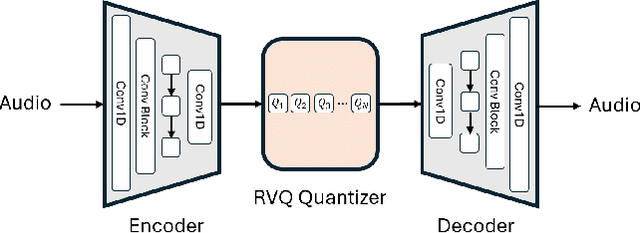
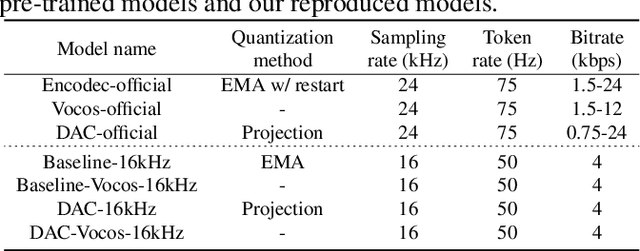
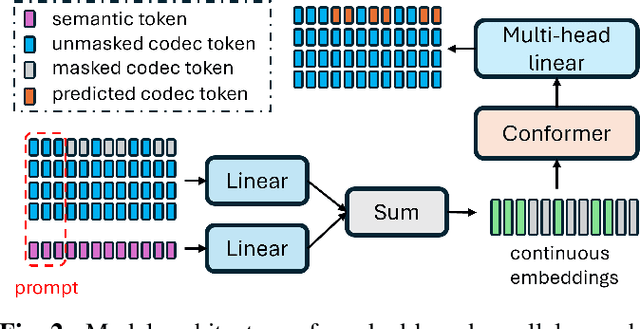
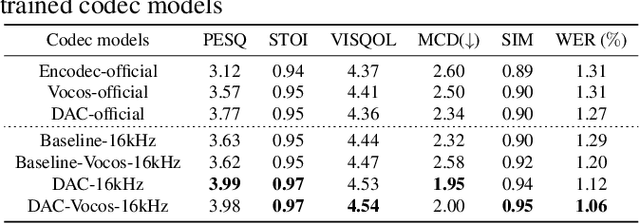
Abstract:Neural audio codec tokens serve as the fundamental building blocks for speech language model (SLM)-based speech generation. However, there is no systematic understanding on how the codec system affects the speech generation performance of the SLM. In this work, we examine codec tokens within SLM framework for speech generation to provide insights for effective codec design. We retrain existing high-performing neural codec models on the same data set and loss functions to compare their performance in a uniform setting. We integrate codec tokens into two SLM systems: masked-based parallel speech generation system and an auto-regressive (AR) plus non-auto-regressive (NAR) model-based system. Our findings indicate that better speech reconstruction in codec systems does not guarantee improved speech generation in SLM. A high-quality codec decoder is crucial for natural speech production in SLM, while speech intelligibility depends more on quantization mechanism.
Exploring Robust Face-Voice Matching in Multilingual Environments
Jul 29, 2024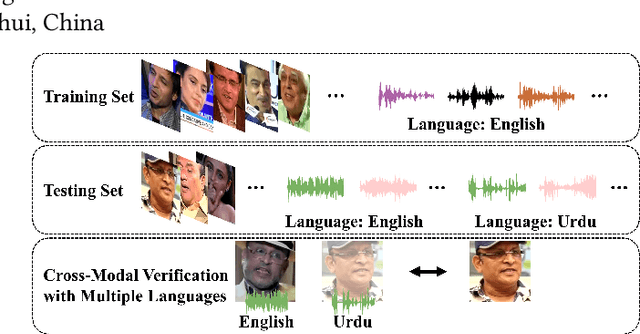



Abstract:This paper presents Team Xaiofei's innovative approach to exploring Face-Voice Association in Multilingual Environments (FAME) at ACM Multimedia 2024. We focus on the impact of different languages in face-voice matching by building upon Fusion and Orthogonal Projection (FOP), introducing four key components: a dual-branch structure, dynamic sample pair weighting, robust data augmentation, and score polarization strategy. Our dual-branch structure serves as an auxiliary mechanism to better integrate and provide more comprehensive information. We also introduce a dynamic weighting mechanism for various sample pairs to optimize learning. Data augmentation techniques are employed to enhance the model's generalization across diverse conditions. Additionally, score polarization strategy based on age and gender matching confidence clarifies and accentuates the final results. Our methods demonstrate significant effectiveness, achieving an equal error rate (EER) of 20.07 on the V2-EH dataset and 21.76 on the V1-EU dataset.
Laugh Now Cry Later: Controlling Time-Varying Emotional States of Flow-Matching-Based Zero-Shot Text-to-Speech
Jul 17, 2024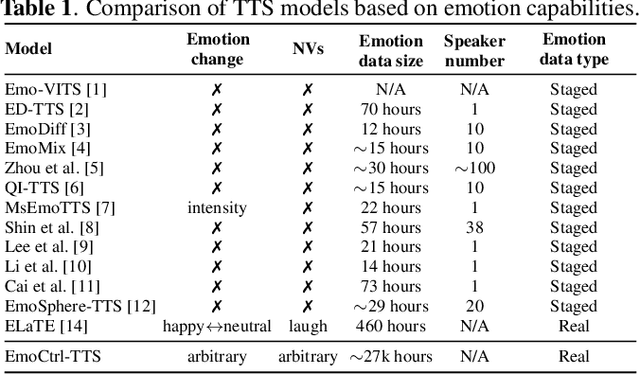


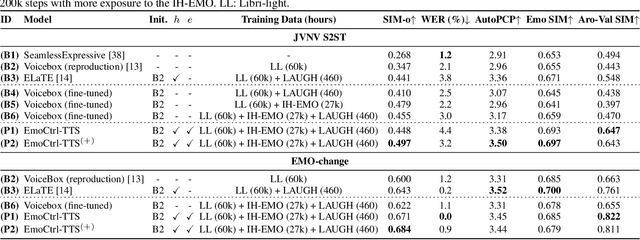
Abstract:People change their tones of voice, often accompanied by nonverbal vocalizations (NVs) such as laughter and cries, to convey rich emotions. However, most text-to-speech (TTS) systems lack the capability to generate speech with rich emotions, including NVs. This paper introduces EmoCtrl-TTS, an emotion-controllable zero-shot TTS that can generate highly emotional speech with NVs for any speaker. EmoCtrl-TTS leverages arousal and valence values, as well as laughter embeddings, to condition the flow-matching-based zero-shot TTS. To achieve high-quality emotional speech generation, EmoCtrl-TTS is trained using more than 27,000 hours of expressive data curated based on pseudo-labeling. Comprehensive evaluations demonstrate that EmoCtrl-TTS excels in mimicking the emotions of audio prompts in speech-to-speech translation scenarios. We also show that EmoCtrl-TTS can capture emotion changes, express strong emotions, and generate various NVs in zero-shot TTS. See https://aka.ms/emoctrl-tts for demo samples.
E2 TTS: Embarrassingly Easy Fully Non-Autoregressive Zero-Shot TTS
Jun 26, 2024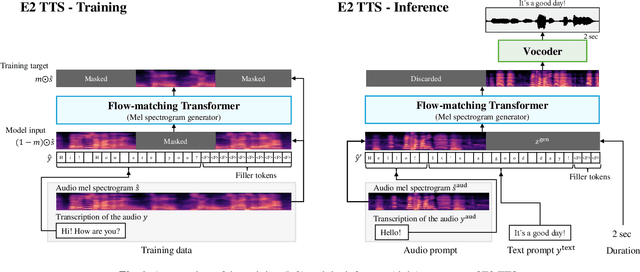
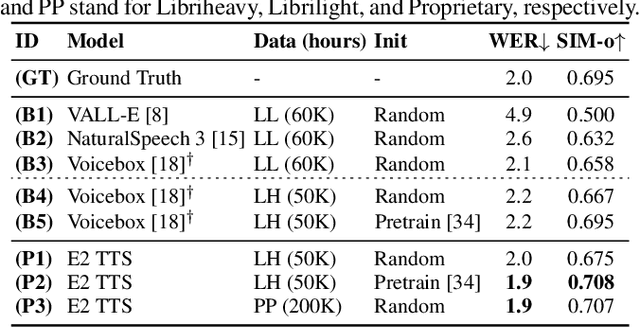
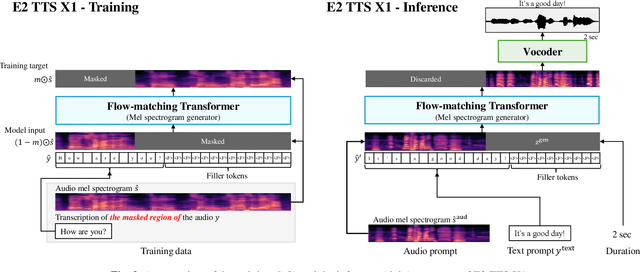
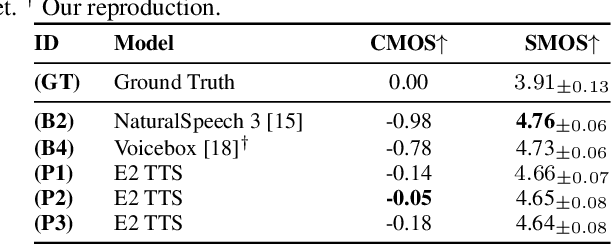
Abstract:This paper introduces Embarrassingly Easy Text-to-Speech (E2 TTS), a fully non-autoregressive zero-shot text-to-speech system that offers human-level naturalness and state-of-the-art speaker similarity and intelligibility. In the E2 TTS framework, the text input is converted into a character sequence with filler tokens. The flow-matching-based mel spectrogram generator is then trained based on the audio infilling task. Unlike many previous works, it does not require additional components (e.g., duration model, grapheme-to-phoneme) or complex techniques (e.g., monotonic alignment search). Despite its simplicity, E2 TTS achieves state-of-the-art zero-shot TTS capabilities that are comparable to or surpass previous works, including Voicebox and NaturalSpeech 3. The simplicity of E2 TTS also allows for flexibility in the input representation. We propose several variants of E2 TTS to improve usability during inference. See https://aka.ms/e2tts/ for demo samples.
Total-Duration-Aware Duration Modeling for Text-to-Speech Systems
Jun 06, 2024



Abstract:Accurate control of the total duration of generated speech by adjusting the speech rate is crucial for various text-to-speech (TTS) applications. However, the impact of adjusting the speech rate on speech quality, such as intelligibility and speaker characteristics, has been underexplored. In this work, we propose a novel total-duration-aware (TDA) duration model for TTS, where phoneme durations are predicted not only from the text input but also from an additional input of the total target duration. We also propose a MaskGIT-based duration model that enhances the diversity and quality of the predicted phoneme durations. Our results demonstrate that the proposed TDA duration models achieve better intelligibility and speaker similarity for various speech rate configurations compared to the baseline models. We also show that the proposed MaskGIT-based model can generate phoneme durations with higher quality and diversity compared to its regression or flow-matching counterparts.
Making Flow-Matching-Based Zero-Shot Text-to-Speech Laugh as You Like
Feb 12, 2024Abstract:Laughter is one of the most expressive and natural aspects of human speech, conveying emotions, social cues, and humor. However, most text-to-speech (TTS) systems lack the ability to produce realistic and appropriate laughter sounds, limiting their applications and user experience. While there have been prior works to generate natural laughter, they fell short in terms of controlling the timing and variety of the laughter to be generated. In this work, we propose ELaTE, a zero-shot TTS that can generate natural laughing speech of any speaker based on a short audio prompt with precise control of laughter timing and expression. Specifically, ELaTE works on the audio prompt to mimic the voice characteristic, the text prompt to indicate the contents of the generated speech, and the input to control the laughter expression, which can be either the start and end times of laughter, or the additional audio prompt that contains laughter to be mimicked. We develop our model based on the foundation of conditional flow-matching-based zero-shot TTS, and fine-tune it with frame-level representation from a laughter detector as additional conditioning. With a simple scheme to mix small-scale laughter-conditioned data with large-scale pre-training data, we demonstrate that a pre-trained zero-shot TTS model can be readily fine-tuned to generate natural laughter with precise controllability, without losing any quality of the pre-trained zero-shot TTS model. Through the evaluations, we show that ELaTE can generate laughing speech with significantly higher quality and controllability compared to conventional models. See https://aka.ms/elate/ for demo samples.
Understanding the Weakness of Large Language Model Agents within a Complex Android Environment
Feb 09, 2024



Abstract:Large language models (LLMs) have empowered intelligent agents to execute intricate tasks within domain-specific software such as browsers and games. However, when applied to general-purpose software systems like operating systems, LLM agents face three primary challenges. Firstly, the action space is vast and dynamic, posing difficulties for LLM agents to maintain an up-to-date understanding and deliver accurate responses. Secondly, real-world tasks often require inter-application cooperation}, demanding farsighted planning from LLM agents. Thirdly, agents need to identify optimal solutions aligning with user constraints, such as security concerns and preferences. These challenges motivate AndroidArena, an environment and benchmark designed to evaluate LLM agents on a modern operating system. To address high-cost of manpower, we design a scalable and semi-automated method to construct the benchmark. In the task evaluation, AndroidArena incorporates accurate and adaptive metrics to address the issue of non-unique solutions. Our findings reveal that even state-of-the-art LLM agents struggle in cross-APP scenarios and adhering to specific constraints. Additionally, we identify a lack of four key capabilities, i.e., understanding, reasoning, exploration, and reflection, as primary reasons for the failure of LLM agents. Furthermore, we provide empirical analysis on the failure of reflection, and improve the success rate by 27% with our proposed exploration strategy. This work is the first to present valuable insights in understanding fine-grained weakness of LLM agents, and offers a path forward for future research in this area. Environment, benchmark, and evaluation code for AndroidArena are released at https://github.com/AndroidArenaAgent/AndroidArena.
DTMM: Deploying TinyML Models on Extremely Weak IoT Devices with Pruning
Jan 17, 2024Abstract:DTMM is a library designed for efficient deployment and execution of machine learning models on weak IoT devices such as microcontroller units (MCUs). The motivation for designing DTMM comes from the emerging field of tiny machine learning (TinyML), which explores extending the reach of machine learning to many low-end IoT devices to achieve ubiquitous intelligence. Due to the weak capability of embedded devices, it is necessary to compress models by pruning enough weights before deploying. Although pruning has been studied extensively on many computing platforms, two key issues with pruning methods are exacerbated on MCUs: models need to be deeply compressed without significantly compromising accuracy, and they should perform efficiently after pruning. Current solutions only achieve one of these objectives, but not both. In this paper, we find that pruned models have great potential for efficient deployment and execution on MCUs. Therefore, we propose DTMM with pruning unit selection, pre-execution pruning optimizations, runtime acceleration, and post-execution low-cost storage to fill the gap for efficient deployment and execution of pruned models. It can be integrated into commercial ML frameworks for practical deployment, and a prototype system has been developed. Extensive experiments on various models show promising gains compared to state-of-the-art methods.
PDiT: Interleaving Perception and Decision-making Transformers for Deep Reinforcement Learning
Dec 26, 2023Abstract:Designing better deep networks and better reinforcement learning (RL) algorithms are both important for deep RL. This work studies the former. Specifically, the Perception and Decision-making Interleaving Transformer (PDiT) network is proposed, which cascades two Transformers in a very natural way: the perceiving one focuses on \emph{the environmental perception} by processing the observation at the patch level, whereas the deciding one pays attention to \emph{the decision-making} by conditioning on the history of the desired returns, the perceiver's outputs, and the actions. Such a network design is generally applicable to a lot of deep RL settings, e.g., both the online and offline RL algorithms under environments with either image observations, proprioception observations, or hybrid image-language observations. Extensive experiments show that PDiT can not only achieve superior performance than strong baselines in different settings but also extract explainable feature representations. Our code is available at \url{https://github.com/maohangyu/PDiT}.
 Add to Chrome
Add to Chrome Add to Firefox
Add to Firefox Add to Edge
Add to Edge